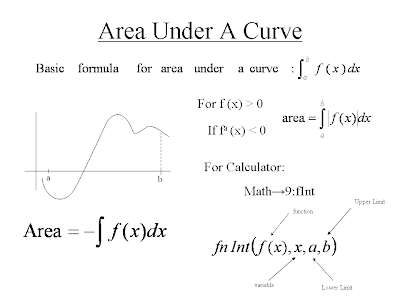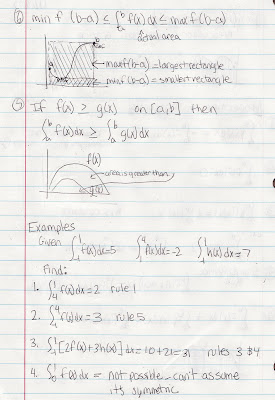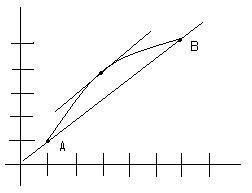
And by the magic of math it is simplified to:
 So lets say your trying to integrate
So lets say your trying to integrate
xcosxdx
The first thing you would do is pick a u and a dv.
u=x dv=cosxdx
Which means that
du=dx v=sinx
Then plug it into the equation so you will have

This you can then easily simplify to xsinx-cosx+C
The thing to remember is not every u and v combination will work so if it appears that one just makes the new equation more complicated, stop and start over with a different set of u's and v's. Try and make u something that simplifies when its differentiated, and try to make dv something that remains manageable when its integrated. One easy way to remember what to look for in integrals is by using the phrase:
L n
I nverse Trig
P olynomials
E xponentials
T rig
Sometimes during your mathematical travels you will come across some integrals in which you would have to use integration by parts twice. Basically all you do is do integration by parts once, and then do integration by parts again, but only for the part of the answer that still has to be integrated. Then you can just put that answer back in.
Lastly, we learned one more form of integration. Its called Tabular Integration and its basically the cheating way of integration by parts. In your integral, if you have one piece that if differentiated enough times will end up at 0, and the other piece is easy to integrate over and over and over, then you can just put them in tabular integration. Lets say you have the integral

So obviously the x squared part is the part that is easy to differentaite and the e to the x is the part that can be integrated many times over. So you make a list where in the write column you begin with the x squared and differentiate it until it is zero. Then on the other side integrate the e to the x until you have it lined up with the zero. Then do a diagonal line from the first x squared to the integral of e to the x and keep making those lines until you run out of e to the x's. Then make the first one positive, the second one negative, the third one positive, and so on. That there is a mediocre account of tabular integration since I was unable to use any diagrams, so if you have questions (which I doubt) ask me in person and I will show you.
































